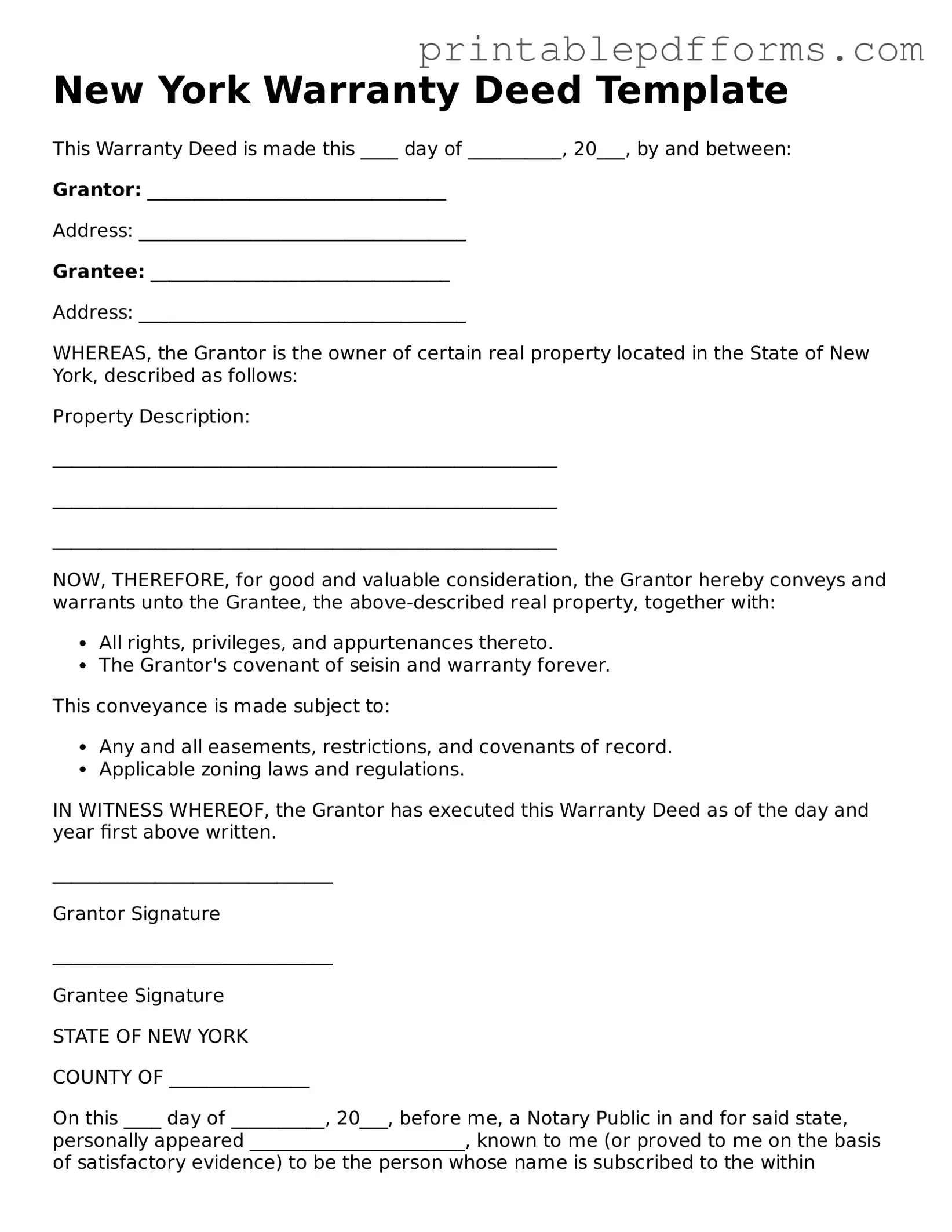New York Warranty Deed Template
This Warranty Deed is made this ____ day of __________, 20___, by and between:
Grantor: ________________________________
Address: ___________________________________
Grantee: ________________________________
Address: ___________________________________
WHEREAS, the Grantor is the owner of certain real property located in the State of New York, described as follows:
Property Description:
______________________________________________________
______________________________________________________
______________________________________________________
NOW, THEREFORE, for good and valuable consideration, the Grantor hereby conveys and warrants unto the Grantee, the above-described real property, together with:
- All rights, privileges, and appurtenances thereto.
- The Grantor's covenant of seisin and warranty forever.
This conveyance is made subject to:
- Any and all easements, restrictions, and covenants of record.
- Applicable zoning laws and regulations.
IN WITNESS WHEREOF, the Grantor has executed this Warranty Deed as of the day and year first above written.
______________________________
Grantor Signature
______________________________
Grantee Signature
STATE OF NEW YORK
COUNTY OF _______________
On this ____ day of __________, 20___, before me, a Notary Public in and for said state, personally appeared _______________________, known to me (or proved to me on the basis of satisfactory evidence) to be the person whose name is subscribed to the within instrument, and acknowledged to me that he/she executed the same in his/her capacity, and that by his/her signature on the instrument, the person executed the instrument.
__________________________________
Notary Public
My commission expires: ________________
